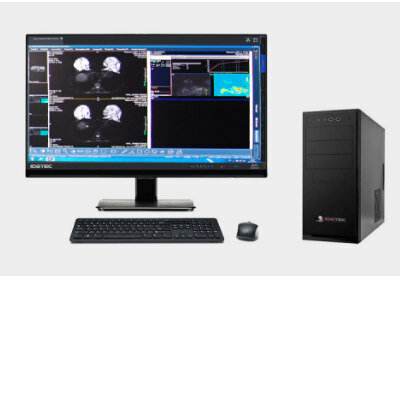Resting State MR Shows Postconcussive Syndrome Patients Suffer Brain Connectivity Disruption
By MedImaging International staff writers
Posted on 16 Aug 2011
A new study has found that patients with mild traumatic brain injury (MTBI) exhibit abnormal functional connectivity in the thalamus, a centrally located relay station for transmitting information throughout the brain. Posted on 16 Aug 2011
The results of the study were published online July 2011 in the journal Radiology. “Using resting-state functional MRI, we found increased functional connectivity of thalamocortical networks in patients following MTBI, due to the subtle injury of the thalamus,” said study coauthor Yulin Ge, MD, associate professor in the department of radiology at the New York University (NYU) Langone Medical Center (NY, USA). “These findings hold promise for better elucidating the underlying cause of a variety of posttraumatic symptoms that are difficult to spot and characterize using conventional imaging methods.”
MTBI, or concussion, accounts for at least 75% of all traumatic brain injuries. Following a concussion, some patients experience a brief loss of consciousness. Other symptoms include headache, dizziness, memory loss, attention deficit, depression, and anxiety. Some of these conditions may persist for months or even years. Typically, in patients with MTBI, there are no structural abnormalities visible on the brain; therefore, researchers have begun using specialized imaging methods to identify abnormalities in how the brain functions.
Comparing levels of activity among different groups of brain cells helps identify which brain networks are communicating with one another. Some brain networks, known as resting state networks (RSNs) and baseline brain activities can be detected when the brain is at rest. These networks include the parts of the brain associated with working memory. “The RSNs have great potential for studying thalamic dysfunction in several clinical disorders including traumatic brain injury,” Dr. Ge noted.
Resting-state functional magnetic resonance imaging (RS-fMRI) has rapidly emerged as an innovative informative tool for investigating brain connectivity between regions that are functionally linked. RS-fMRI offers insight into functional activity and communication between brain regions, which play key roles in cognitive performance. “The disruption of such functional properties is better characterized by RS-fMRI than by conventional diagnostic tools,” Dr. Ge said.
Dr. Ge and colleagues used RS-fMRI to study the brain activity of 24 patients with MTBI and 17 healthy control patients. A normal pattern of thalamic RSNs with relatively symmetric and restrictive connectivity was demonstrated in the healthy control group. In the patients with MTBI this pattern was disrupted, with significantly increased thalamic RSNs and decreased symmetry. These findings correlated with clinical symptoms and diminished neurocognitive functions in the patients with MTBI.
“The thalamic functional networks have multiple functions, including sensory information process and relay, consciousness, cognition, and sleep and wakefulness regulation,” Dr. Ge said. “The disruption of thalamic RSNs may result in a burning or aching sensation, accompanied by mood swings and sleep disorders, and can contribute to certain psychotic, affective, obsessive-compulsive, anxiety and impulse control disorders. These symptoms are commonly seen in MTBI patients with postconcussive syndrome.”
Because the causes of postconcussive syndrome are poorly understood, there is currently no treatment. However, according to Dr. Ge, the results of this research have implications for a new therapeutic strategy, based on sound understanding of the underlying mechanisms of thalamocortical disruption and postconcussive syndrome.
Related Links:
New York University Langone Medical Center














